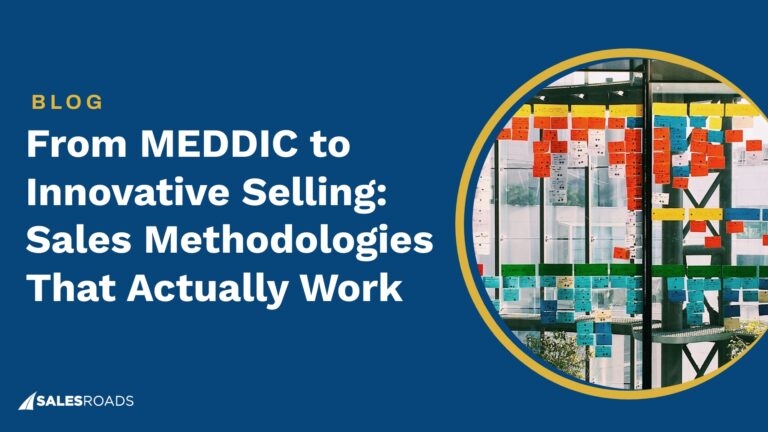There has been a dramatic transition in sales methods over the past decade, and that shift necessitates companies implementing digital sales development strategies.
Digital channels enable businesses to reach a wider audience and adapt to the evolving purchasing behaviors of modern customers, who increasingly rely on researching and making purchasing decisions online.
Digital Sales Development Explained
Digital sales development involves leveraging online platforms, tools, and strategies to engage and nurture relationships with decision-makers, facilitating a more efficient and targeted approach to sales and customer acquisition in the digital landscape.
It plays a crucial role in B2B sales for several reasons:
- Wider reach and accessibility: Digital channels allow businesses to reach a larger, global audience without any limitations.

For instance, the number of decision-makers on LinkedIn is over 65 million. This means B2B companies can connect with them anywhere in the world, expanding their market potential.
- Cost-effectiveness: Digital sales methods can be more cost-effective than traditional sales methods. Utilizing online platforms for marketing and sales activities often requires a lower investment compared to other sales efforts and allows for efficient resource allocation.
- Data-driven insights: Digital sales tools provide access to valuable data and analytics, enabling businesses to make informed decisions, tailor their sales strategies, and better understand their customer’s needs and behaviors.
- Enhanced customer experience: Digital platforms offer opportunities for personalized and engaging customer experiences. B2B companies can use these platforms to provide tailored content, interactive solutions, and support, improving customer satisfaction and loyalty.
By incorporating digital sales development, B2B companies can not only enhance their sales efficiency and effectiveness but also remain competitive in an increasingly digital marketplace.
The Best Digital Sales Development Strategies
Developing a digital sales development strategy allows your business to gain a competitive edge and offer a better customer service experience.
Here are the best strategies:
Know your buyer persona
A buyer persona is a semi-fictional representation of your ideal customer, crafted from market research and real data. This persona guides your strategy, ensuring that your messaging, content, and offerings are aligned with the specific needs, goals, and pain points of your target market.
In B2B sales, where buying decisions often involve multiple stakeholders, it’s crucial to consider various personas representing different roles in the purchasing process. This approach helps in addressing the diverse needs and pain points of each decision-maker involved.
The data collected should inform your sales playbook and automation strategies, leading to a more targeted approach. The right CRM tool plays a pivotal role here, not just in managing relationships but also in providing a dashboard that offers comprehensive analytics. This data-centric approach enables sales teams to make informed decisions, increasing the likelihood of successful engagements.
Understanding your buyer persona also involves continuous learning and adaptation. As markets evolve and new trends emerge, regularly updating your personas ensures that your sales strategies remain relevant and effective.
Choose the right channels
Selecting the right digital channels is crucial for effective digital sales development. The key is to identify and utilize platforms where your buyer personas are most active and receptive.
If your target audience predominantly engages on professional networks like LinkedIn, leveraging this platform for content sharing, personalized messaging, and group participation becomes essential.
However, it’s not just about choosing a single channel; it’s about creating a balanced portfolio of acquisition channels. For example, one thing to be aware of is that salespeople are prone to hiding behind social channels since cold calling can be intimidating. Yet, the phone is the least-crowded channel in the lead generation arsenal and it allows us to connect directly with prospects in a way other channels can’t.
It’s important to include cold calling as a part of your multichannel approach:
Diversifying your digital presence allows you to engage with prospects at different stages of their journey and through various touchpoints, enhancing the chances of conversion.
Use a multichannel approach
A multichannel approach in digital sales development means engaging with your prospects across various digital platforms throughout their buyer journey. This strategy not only increases your reach and visibility but also ensures a consistent and seamless experience for prospects across different touchpoints.
Implementing a multichannel approach requires understanding the unique role each channel plays in the buyer’s journey. For example, social media can be used for attracting and educating prospects, email for nurturing and persuasion, and webinars for demonstration and conversion. This diversified approach ensures that you are top of mind for your prospects, enhancing your chances of conversion.
The importance of this approach lies in its alignment with today’s consumer behavior. Modern consumers are omnichannel; they do not follow a linear path in their buying journey. They might start with a search engine, move to social media for reviews, and end up on a webinar for detailed information. By having a presence across these platforms, you ensure that your brand is visible and accessible regardless of where the prospect is in their journey.
To effectively implement a multichannel strategy, it’s crucial to maintain consistency in messaging and branding across all channels.

Branding consistency can increase revenue by 20%. Because consistency helps in building a cohesive brand image and improves the overall customer experience.
Provide value and education
Providing value and education is a fundamental principle in digital sales development. This approach involves offering your prospects useful and relevant content, information, and resources that help them solve problems, achieve goals, or gain new knowledge. By focusing on value and education, you position yourself as an authority in your field, building trust and rapport with your prospects.
Creating valuable content starts with understanding the challenges and needs of your target audience. This understanding enables you to produce content that resonates with them, whether it’s educational articles, insightful webinars, or practical guides. The key is to address their pain points and offer solutions, positioning your product or service as a natural fit for their needs.
Personalize your communication
Personalization in digital sales development means tailoring your communication to meet the specific needs, interests, and behaviors of your prospects. This approach demonstrates that you understand and care about your prospects, increasing the likelihood of engaging them effectively.
Personalization can take many forms, from addressing prospects by name in emails to recommending products based on their browsing history. The key is to make each prospect feel that your communication is specifically designed for them. This approach not only enhances the customer experience but also improves the effectiveness of your sales efforts.
Effective personalization also involves segmenting your audience based on various criteria, such as industry, role, or stage in the buyer journey. This segmentation enables you to deliver more targeted and relevant communication, increasing engagement and conversion rates.
Personalization is not a one-time effort; it requires ongoing refinement based on feedback and performance data. Regularly updating your personalization strategies ensures that they remain effective and aligned with your prospects’ evolving needs.
Track and measure your results
Tracking and measuring results is vital in evaluating and improving your digital sales development efforts. This process involves using metrics and indicators to assess your performance in terms of reach, engagement, conversion, and revenue.
To effectively track and measure your results, you need to identify key performance indicators (KPIs) that align with your sales objectives. These KPIs might include metrics like website traffic, lead generation rates, conversion rates, customer acquisition cost, and customer lifetime value. By monitoring these metrics, you gain insights into the effectiveness of your digital sales strategies.
Analyzing your performance data helps you understand what’s working and what isn’t. This understanding enables you to optimize your campaigns, refine your strategies, and improve your overall sales effectiveness. For instance, if you notice a high click-through rate but a low conversion rate on a particular campaign, you might need to adjust your messaging or the landing page experience.
Bottom Line
The key to successful B2B sales in this rapidly changing digital landscape lies in a strategic, data-driven approach that prioritizes understanding and meeting the specific needs of your customers.
By implementing the best digital sales development strategies, you’ll not only meet the current demands of the market but also position your business for sustained growth and success.










